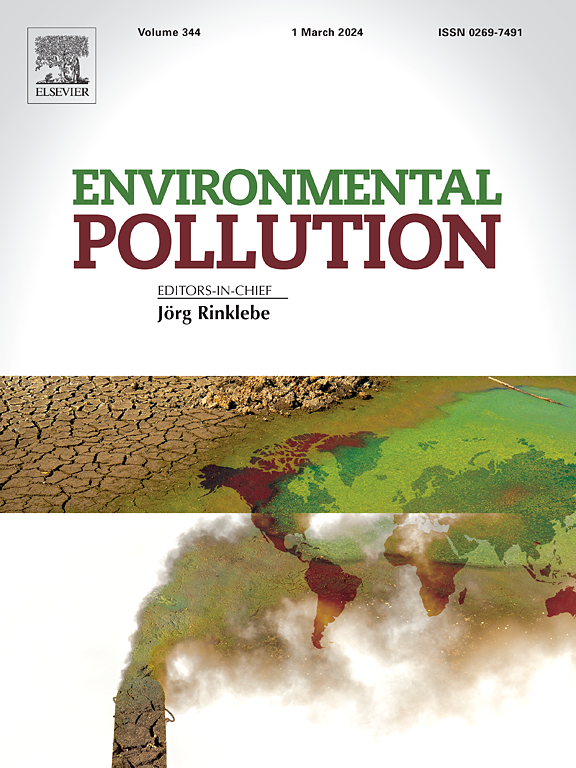Characterization and risk-quantification of antibiotic resistome in grain-based and non-grain cropping soils
IF 7.6
2区 环境科学与生态学
Q1 ENVIRONMENTAL SCIENCES
引用次数: 0
Abstract
Microbial contamination in soils, encompassing human bacterial pathogens (HBPs), antibiotic resistance genes (ARGs), and virulence factor genes (VFGs), poses a significant threat to human health via the food chain. Currently, there is a lack of comprehensive assessments of microbial contamination and associated health risks of ARGs in agricultural soils. In this study, metagenomic sequencing was used to evaluate microbial contamination in grain-based cropping soils (rice cultivation) and non-grain cropping soils (vegetable cultivation and aquaculture). The results showed that the diversity and abundance of HBPs and VFGs were significantly higher in non-grain soils. Further resistome analysis revealed higher abundances of high-risk (from 0.014 to 0.018–0.023) and “last-resort” ARGs (from 0.007 to 0.034–0.046) in non-grain soils. Besides ARGs abundance, health risk quantification revealed that non-grain soils exhibited 1.49–2.14-fold greater ARG-related risks than grain-based soils. Additionally, stronger network associations were found between HBPs, ARGs, and mobile genetic elements (MGEs) in non-grain soils. This study indicated that the non-grain cropping pattern of soils elevated the risk of microbial contamination and ARGs health risk, which provided an important basis for accurately quantifying the risk of microbial contamination in different agricultural soils.


求助全文
约1分钟内获得全文
求助全文
来源期刊

Environmental Pollution
环境科学-环境科学
CiteScore
16.00
自引率
6.70%
发文量
2082
审稿时长
2.9 months
期刊介绍:
Environmental Pollution is an international peer-reviewed journal that publishes high-quality research papers and review articles covering all aspects of environmental pollution and its impacts on ecosystems and human health.
Subject areas include, but are not limited to:
• Sources and occurrences of pollutants that are clearly defined and measured in environmental compartments, food and food-related items, and human bodies;
• Interlinks between contaminant exposure and biological, ecological, and human health effects, including those of climate change;
• Contaminants of emerging concerns (including but not limited to antibiotic resistant microorganisms or genes, microplastics/nanoplastics, electronic wastes, light, and noise) and/or their biological, ecological, or human health effects;
• Laboratory and field studies on the remediation/mitigation of environmental pollution via new techniques and with clear links to biological, ecological, or human health effects;
• Modeling of pollution processes, patterns, or trends that is of clear environmental and/or human health interest;
• New techniques that measure and examine environmental occurrences, transport, behavior, and effects of pollutants within the environment or the laboratory, provided that they can be clearly used to address problems within regional or global environmental compartments.
 求助内容:
求助内容: 应助结果提醒方式:
应助结果提醒方式:


